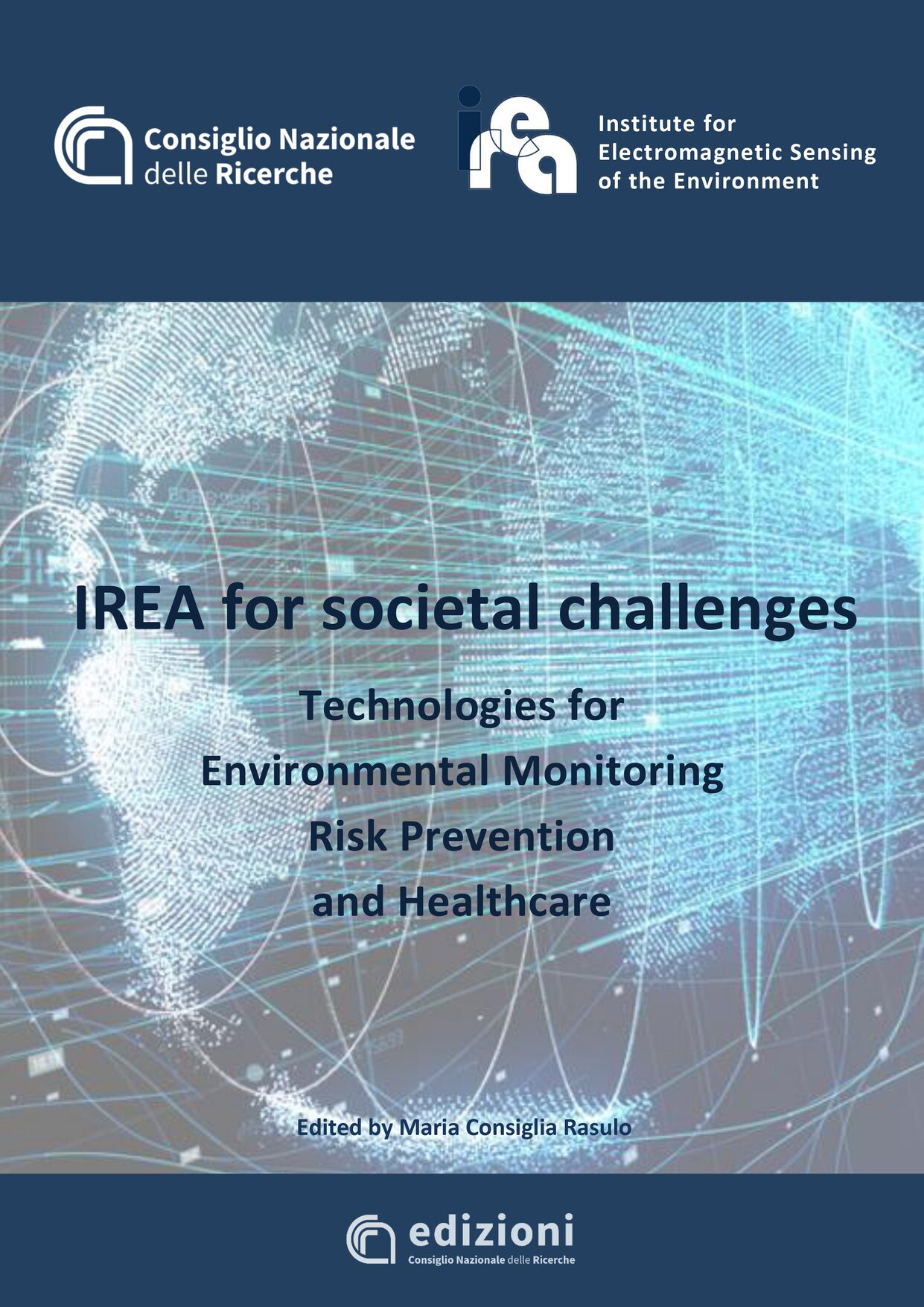The interest in a safe and healthy environment, where the potential risk factors are controlled, is widely accepted and is the target of those who must manage and administer a territory. This justifies the development of methodologies that make use of sophisticated sensors capable of observing Earth's surface and its changes, to monitor deformations of buildings and large structures, and provide useful information in order to evaluate risks to human health and environment.
The research activity taking place at IREA focuses on these topics, studying techniques to acquire, process, interpret and make available to various users data from electromagnetic sensors, and evaluating the biological effects of exposure to electromagnetic fields and their possible applications in the medical field.
IREA is a scientific and technological research institute belonging to the largest Italian research institution, The National Research Council (CNR); it is affiliated to the Department of Engineering - ICT and Technology for Energy and Transport (DIITET) and participates in the activities of the Department of Earth System Science and Technology for the Environment of CNR. IREA is also involved in projects of public communication of science and carries out activities of science education.
The Institute research activities meet the needs of the country's scientific and technological development in the field of remote sensing and electromagnetic monitoring of environment through the study of methodologies and technologies for acquisition, processing, fusion and interpretation of data derived from electromagnetic sensors on satellites, aircraft and in situ, and the dissemination of information useful for territorial management, supervision, security and risk assessment, including the electromagnetic one. In addition, methodologies and technologies are developed for the construction of infrastructure for geo-spatial data and biomedical applications of electromagnetic fields.
To this end, IREA uses multidisciplinary expertise, such as telecommunications engineering, computer science, physics, geology, biology, environmental science.
- Microwave Remote Sensing
- Optical Remote Sensing
- Electromagnetic Diagnostic
- Bioelectromagnetics
- Geographic Information Systems
Activities of investigations, research and experimentation on Public Communication of Science and scientific education activities are also carried out.
The Institute, founded in
Large and prestigious is the set of contractors of the research and development activities carried out by the Institute. Among them there are the European Commission, the European Space Agency, the Italian Space Agency, Regions and Local Authorities, various domestic and foreign companies. IREA is also
The Institute is also very well rooted in the territory. Besides numerous collaborations with companies and local authorities, IREA participates in two centers of competence of Campania Region (CeRICT and AMRA). It also provides technical and scientific support to the Italian Cluster for Aerospace Technology (CTNA) and to the Lombardy Region in the framework of NEREUS (Network of European Regions Using Space Technologies), the European platform that puts forward the regional strategies on spatial themes. In addition, IREA is present within the Scientific and Technical Core (NTS) of the Lombard Aerospace District Organizing Committee, an integrated system of companies, universities and research centers provided with technological skills and cutting-edge scientific capabilities in the aerospace sector. IREA participates also in the National Interuniversity Consortium for Telecommunications (CNIT) and in the Interuniversity Center on Interaction between Electromagnetic Fields and Biosystems (ICEmB).
Finally, the Institute is actively contributing to the actions carried out by SERIT (Security Research in ITaly), the National Technological Platform on Security jointly promoted by CNR and Finmeccanica, where the issues of remote sensing, electromagnetic diagnostics and bio-electromagnetism are present in a transversal way with respect to the leading sectors identified as priorities for the country.
The Institute headquarters is in
IREA staff consists of 57 people, more than 75% are researchers and technologists. This is the distribution
| Naples | Milan | Total | |
| Permanent Researchers and Technologists | 19 | 13 | 32 |
| Temporary Researchers and Technologists | 7 | 4 | 11 |
| Permanent technical staff | 3 | 2 | 5 |
| Temporary technical staff | 1 | 2 | 3 |
| Permanent Administrative staff | 2 | 1 | 3 |
| Temporary Administrative staff | 2 | 1 | 3 |
| Total | 34 | 23 | 57 |
8 Associate Researchers, 31 Research Grant holders and many young people in training through scholarships, PhD, traineeships, and students pursuing their thesis at the Institute also contribute to research activities.



